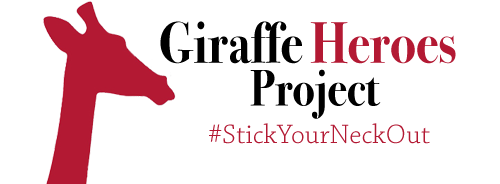Helping the Blind
Special needs School “Juana Manso”, Villa Allende, Córdoba province, Argentina.
Fourth, fifth and sixth year students from the special needs school “Juana Manso” who are specialised in carpentry have carried out two consecutive service learning experiences. The first one involved building one-piece aluminium folding canes for the visually impaired and people with low vision who could not afford them. The second one was derived from the first and involved the making of Braille signage to be displayed on the streets of the city.
In 2017, the students received a letter from the rehabilitation centre “Julián Baquero” which stated the difficulty it ran into when acquiring the elements they needed for patients who were undergoing treatment at the institution. This centre operates in the same town in which the school is located and it offers treatment to a wide number of adult blind people, people with low vision and people who are deaf-blind.
The students thought of addressing the lack of canes for these people, much needed to be able to lead normal lives and they carried out a project to make them. The students learnt that these canes are different from the wooden ones made for leaning on: they can be folded and are made of aluminium.
They researched and looked for information on the internet, they asked specialists and they surveyed several orthopaedic supply stores in Villa Allende. As they had never worked with aluminium before, they also analysed the material to be used. At the same time, they did fieldwork such as experiential exercises to establish empathy with the issues involved.
To make custom-made canes, the students interviewed each and every one of the beneficiaries and they measured them. The beneficiaries told the students the reason why the canes were different colours: they correspond to different degrees of visual impairment. A workshop collaborated with the project with the building of a machine designed by the students to be able to fold the material with precision.
The resulting cane can be folded, has an elastic cord inside, and the bottom tip is made of a material called grilon. The plans were provided by INTI (National Institute of Industrial Technology).
Following the same approach and motivated by their relationship with the beneficiaries, the students took on another commitment: to display Braille signage on the streets of their city. To be able to design the signs and then write them in Braille, they received the advice of Technical Education Centre No. 18 of Villa Regina. Members of the rehabilitation centre taught them to write in Braille and in the process, the students acquired a series of skills and trained exercising with different tools such as the punch.
In partnership with the Municipality, they agreed that the Municipality would commit to collaborate with the necessary materials. The local Council signed the ordinance into law authorizing the signalling of the city of Villa Allende with the signs prepared by the students with the denomination of the streets in Braille.
The activities carried out by the children of the Special School "Juana Manso" consisted of surveying streets, measuring their heights, dimensioning street signs, writing them in Braille and placing them in the assigned places. To check if the writing on the signs was correct, a professional from the Baquero centre reviewed them.
In the development of these projects, the students learnt specific skills regarding the use of metallic materials and learnt the characteristics and the good use of the machines with which they made the canes and signage. At the same time, the practice of the Braille system in the classroom favoured traditional reading, writing and orality in the students.
